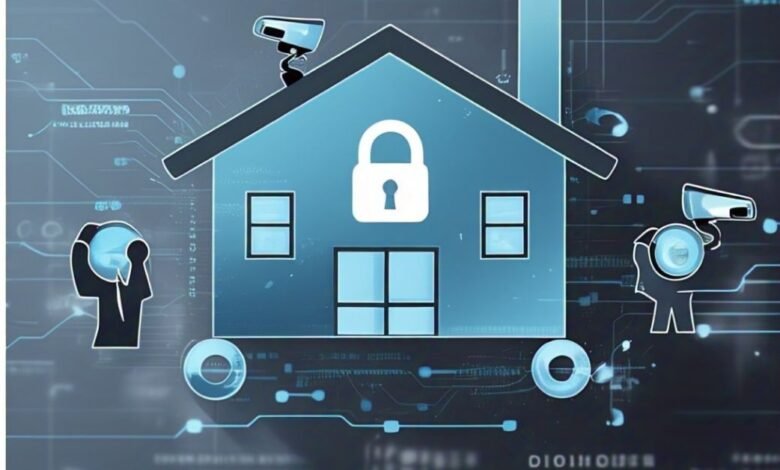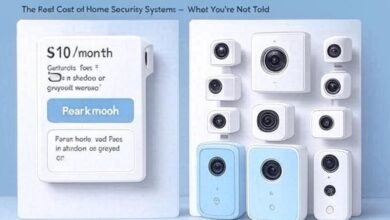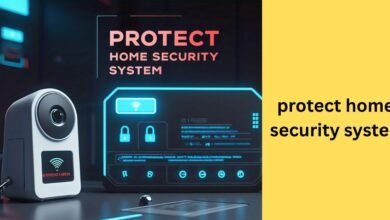10 Shocking Ways Hackers Can Breach Your Home Security System—5 Will Terrify You!

Introduction
Your home security system is designed to protect you—but who’s protecting it? In today’s connected world, smart alarms, cameras, and locks are vulnerable to both physical tampering and cyberattacks. If hackers compromise these devices, your home could be at serious risk. This guide covers practical steps to safeguard your home security system against digital and physical threats.
Table of Contents
What Is a Home Security System?
Modern security systems combine technology and hardware to monitor and protect your home. The most common types include:
- Wired systems – Offer stable performance, though installation is more complex.
- Wireless systems – Easier to set up, but may suffer from signal interference.
- Smart systems – Controlled via mobile apps and internet connections—convenient but potentially hackable.
These setups often include motion sensors, cameras, and smart locks, all connected to a central hub. But if not configured correctly, these devices can become weak points.
Top Rated Home Security System Plano TX
Why It’s Critical to Secure Your Home Security Setup
Consider this: a burglar disables your alarm system without even entering your home. Sounds far-fetched? It’s not. There have been real incidents where cybercriminals:
- Accessed baby monitors to spy on families
- Disabled alarm systems remotely
- Hacked smart locks to enter homes without a trace
If your system isn’t protected, it’s like leaving your front door wide open.
Common Security Flaws in Home Systems
Here are some of the most frequent vulnerabilities:
- Weak or default passwords like “admin” or “123456”
- Outdated firmware that hasn’t received security patches
- Unsecured home Wi-Fi networks that expose connected devices
6 Steps to Lock Down Your Home Security System
1. Change Default Passwords Immediately
Many devices ship with easy-to-guess credentials. Replace them with strong, unique passwords using:
- A mix of letters, numbers, and special characters
- No personal information such as birthdays or names
2. Enable Two-Factor Authentication (2FA)
2FA adds a critical extra layer of protection. Even if your password is compromised, access won’t be granted without a second verification step, such as a text or app code.
3. Keep Your Devices Updated
Manufacturers regularly release security updates. Enable automatic updates if possible or check manually every month.
4. Secure Your Wi-Fi Network
- Use WPA3 encryption or, at minimum, WPA2
- Set up a separate network for smart devices
- Avoid using the same password as your main network
5. Use a VPN for Remote Access
A VPN encrypts your internet traffic, adding a privacy shield when you access your system from outside your home.
6. Monitor Activity Logs Regularly
Most systems let you view activity history. Look for unknown logins, unrecognized IPs, or unusual patterns. Act quickly if something seems off.

Advanced Protection Techniques
Want extra peace of mind? Consider these upgrades:
- Firewalls to prevent unauthorized network access
- Biometric access such as fingerprint or facial recognition
- Encrypted camera feeds to keep visual data private and secure
Physical Security Matters, Too
Digital protection is vital, but don’t ignore physical vulnerabilities:
- Mount cameras out of easy reach
- Conceal wiring to prevent tampering
- Secure outdoor units with protective housing
Choosing the Right Home Security Provider
Select companies that prioritize security features, including:
- End-to-end data encryption
- Routine firmware and software updates
- 24/7 customer support with cybersecurity training
What to Do if You Suspect a Breach
If you think your system has been compromised:
- Disconnect it from the internet
- Change all passwords immediately
- Contact your security provider for assistance and system re-evaluation
Preparing for the Future: Smarter Systems
Today’s leading-edge systems use AI-powered analytics to detect suspicious behavior, such as a person loitering outside your home. As threats evolve, so should your defenses.
Common Myths About Home Security
Myth: “Hackers only target big houses.”
Fact: Bots automatically scan for vulnerable systems—anyone can be a target.
Myth: “The factory settings are already secure.”
Fact: Default settings are often the weakest point in your setup.
Legal Considerations for Surveillance
Make sure to:
- Comply with local privacy laws
- Avoid filming areas that extend beyond your property, such as neighbors’ yards or public sidewalks
Budget-Friendly Tips for Boosting Security
You don’t need a huge budget to improve your setup:
- Use free strong password generators
- Install motion-sensor lighting as a deterrent
- Enable auto-logout features where available
Conclusion
A home security system is only effective if it’s secure. By changing default settings, enabling 2FA, and keeping your devices and network protected, you create a much harder target for intruders—both physical and digital. Act now, not after an incident. Your safety depends on it.
FAQs
1. Can hackers really break into my home security system?
Yes, especially if it’s poorly secured. Follow best practices like strong passwords and 2FA to prevent this.
2. How often should I update my passwords?
Every 3–6 months, or immediately after a suspected breach.
3. Are wireless systems more vulnerable?
They can be, but with proper encryption and security settings, they’re just as safe.
4. What’s the safest way to access my system remotely?
Use a VPN along with a reputable app that supports 2FA.
5. Should I report suspicious activity to my provider?
Absolutely. They can help investigate and take corrective action to protect your system.




